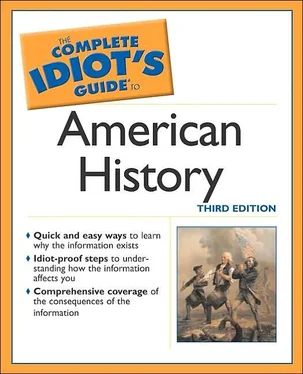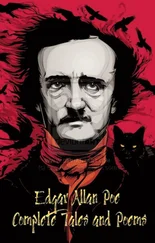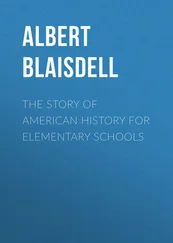Distilled within the Bill of Rights is what most people would consider the very essence of all that is most valuable in the idea of the United States of America.
Among the most influential members of Washington’s cabinet was Secretary of the Treasury Alexander Hamilton. He not only developed a strong financial program for the infant nation but also used finance to unify the United States and to elevate federal authority over that of the states. He proposed a plan whereby the federal government would assume all debts incurred by the several states during the Revolution and pay them at par value rather than at the reduced rates some states had already negotiated on their own. Hamilton reasoned that this policy would demonstrate the nation’s financial responsibility and ultimately improve its standing among other nations and its ability to conduct commerce. Even more important, the plan would demonstrate to the world that the federal government, not the individual states, was the responsible contracting party in all international commerce and foreign affairs. Despite great resistance from the Southern states, Hamilton’s plan was enacted by Congress.
Equally controversial was Hamilton’s proposal to create the Bank of the United States. Fearing that this plan would concentrate far too much-power in the central government, Thomas Jefferson led the opposition against the proposal within Washington’s cabinet. He argued that the bank was unconstitutional, because the tenth amendment granted to the states and the people rights and powers not explicitly given to the United States. If this provision was breached by the creation of the bank, what other powers would the federal government usurp?
Jefferson’s view of the Constitution became known as “strict construction.” Hamilton, in contrast, supported the constitutional view that became known as “loose construction,” arguing in support of it the doctrine of “implied powers.” Hamilton declared that the framers of the Constitution could not possibly have anticipated all eventualities and contingencies; therefore, it is impossible to list all the powers the federal government may assume. In the case of the Bank of the United States, Hamilton held, the Constitution does grant the federal government the power to tax, and taxation implies the creation of a place to keep the revenue collected—namely, a bank.
The disagreement between Jefferson and Hamilton formed the foundation of the American two-party political system, with either party more or less defined and distinguished by its view of the nature of the federal government. Jefferson’s Democratic-Republican party believed in a restrained central government that allowed a great measure of power to individuals and states; Hamilton’s Federalist party stood for a relatively powerful and active central government, which claimed for itself the lion’s share of authority. The dynamic, shifting balance between these two poles of opinion has defined the lively American political scene ever since the days of the first president. Over the years, the running dialogue has sometimes erupted into ugly argument and even terrible violence—as in the Civil War. Yet the two-party system has also insured a government and society that is never stagnant and always open to change and challenge.
The Least You Need to Know
The key to the Constitution is a strong central government that is itself governed by a system of checks and balances.
In addition to the nation’s first president, George Washington, the defining personalities of the early republic were Thomas Jefferson (who favored the forces of liberal democracy) and Alexander Hamilton (who favored a powerful central government).
The eagle on the Great Seal of the United States of America holds in its beak a ribbon on which the Latin motto e pluribus unum is inscribed. The words mean “from many, one” and express the formidable nature of the task that faced the founding fathers: to forge a single nation from several states and many individuals. The motto was chosen by a committee appointed by the Continental Congress on July 4, 1776, and was officially adopted on June 20, 1782. The phrase is a quotation from “Moretum” by the Roman poet Vergil (70-19 B.C.) but was borrowed more immediately from Gentleman’s Magazine, a popular British periodical on whose cover the phrase had appeared for many years.
In August 1786, armed mobs of beleaguered farmers began forcing the closure of courts in Massachusetts’s frontier counties. A charismatic Revolutionary War veteran, Daniel Shays (ca. 1747-1825), emerged as the leader of what came to be called Shays’s Rebellion. It was not until January 25, 1787, that a state militia force was able to disperse rebels in Springfield.
Bicameral literally means “two-chambered” and refers to a type of legislature consisting of two groups of representatives. In the case of the British Parliament, the two houses are the House of Lords and the House of Commons; in the case of the U.S. Congress, they are the Senate and the House of Representatives.
The framers of the Constitution wanted to avoid election of the president directly by the people. As ultimately provided in the Constitution, each state has as many electors as it has senators and representatives combined. Together, the electors constitute the Electoral College. Originally, the electors were voted into office by the state legislatures. This evolved into election by the people. (Today, we may believe that, every fourth November, we are voting for a president, but actually, we are voting for electors pledged to cast their votes for a particular candidate.)
Of the 85 Federalist essays, most scholars agree that Hamilton wrote 52, Madison 28, and Jay 5.
George Washington (1732-99) was born in Westmoreland County, Virginia, to a prosperous planter. After his father died in 1743, he was raised by his half-brother Lawrence at Mount Vernon, Lawrence’s Potomac River plantation. Washington became a surveyor—a powerful profession in colonial America—and helped lay out Belhaven, Virginia (now Alexandria). Following the death of his half-brother, Washington inherited Mount Vernon.
He left that beloved home to serve in the French and Indian War, returning afterward to Mount Vernon and service in Virginia’s House of Burgesses.
Washington made a happy—and opportune—marriage to a young and wealthy widow, Martha Dandridge Custis and by 1769 was a prominent leader of Virginia’s opposition to Britain’s oppressive colonial policies. During 1774-75, Washington was a delegate to the First and Second Continental Congress, and in June 17 75 was unanimously chosen as commander in chief of the Continental forces, which he led brilliantly.
After the war, Washington headed the Virginia delegation to the Constitutional Convention and was unanimously elected presiding officer. Upon ratification of the Constitution, he was unanimously elected president in 1789 and was reelected in 1792. In March 1797, when Washington left office, he left a well-established government and a stable financial system.
Unfortunately, the Father of His Country had little time to enjoy retirement at his beloved Mount Vernon. In mid-December 1799, he fell ill with acute laryngitis, which rapidly worsened. He died on December 14.
In 1791, Congress levied a federal tax on corn liquor. In frontier Pennsylvania, farmers distilled whiskey to use up surplus corn, and the product became for them a form of currency. Farmers protested and often refused to pay the tax. In 1794, President Washington sent collectors, who were met by armed resistance in what constituted the first serious test of the new U.S. government’s ability to enforce a federal law. Secretary of the Treasury Alexander Hamilton advised the president to call out the militia. In a bold exercise of federal authority, Washington did just that, and the Whiskey Rebellion collapsed.
Читать дальше












